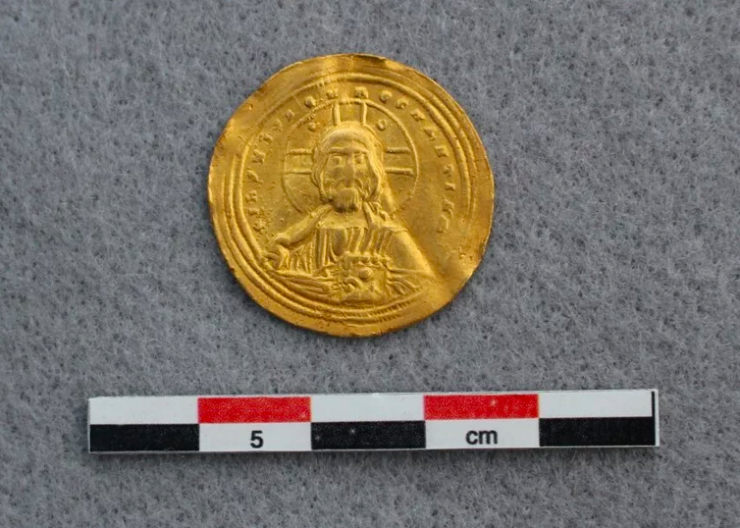
An extremely rare gold coin with the image of Jesus on it has been uncovered in Norway.
The 1,000-year-old coin was found in Norway's Vestre Slidre mountains by a metal detectorist and is believed to be Byzantine.
It is in remarkable condition for its age. A crisp engraving of Jesus holding a Bible can be clearly seen on one side, while researchers believe the reverse shows Byzantine rulers Basil II and Constantine VIII, who ruled over the empire together from 962 to 1025.
The coin bears two inscriptions, one paying tribute to "Jesus Christ, King of those who reign". The other is in Greek and states "Basil and Constantine, emperors of the Romans".
It is believed to have been minted between 977 and 1025 AD.
The discovery is "very rare" and has excited officials at the Innlandet County Municipality in Norway, which made the announcement.
"The coin is unique in the Norwegian context," it said in a statement originally released in Norwegian.
"It has held up exceptionally well. The coin appears largely unchanged from when it was lost, perhaps a thousand years ago."
Officials can only speculate as to how the coin ended up in Norway, some 1,600 miles from Istanbul, which was the capital of the Byzantine Empire when it was known as Constantinople.
One theory is that the coin was part of the wages of Harald Hardrada from the time when he led the Varangian Guard - a unit of bodyguards to the Byzantine emperors. He later returned to Norway and became King Harald III.
Other theories posit that it was lost by a clergyman on his travels along one of the older traffic routes through the region, or that it came to Norway via the salt trade.
"The old trade routes, the salt roads, were based on trade in salt from Western Norway, so it is also possible that the coin entered into a good trade between salt and herring from the west, and iron ingots, reindeer skins and antlers from the east," said officials.
Investigations of the discovery site are planned for 2024.
Republished from Christian Today UK.




